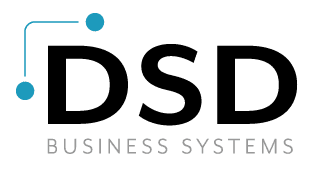Make Sage ERP Your Sales Tax Survival Tool

Imagine this. You just received word that your organization was randomly selected for a sales tax audit and you only have 3 days to prepare. Your company has never been audited before, but you feel pretty confident that all of your sales and associated sales tax rates have been recorded and remitted properly. All of your resale certificates are kept neatly in a filing cabinet in the storage room and you have a master excel spreadsheet that details all of the rates, rule, and boundary changes you have managed over the years. Occasionally, you do sell online, but nothing noteworthy and only to customers who reside right across the state line. You consider your sales tax liability risk fairly low, and truly believe that your accountant’s records will be good enough to get you through the audit reasonably unscathed.
Fast forward several months later, and you are shocked and horrified when you hear back from the auditor. You have been issued a proposed fine of $47,500 for undercharged sales tax rates and missing resale certificates. How can this be?
The truth is that sales tax affects every business. It impacts just about every product (and in some cases services) you sell. Rates, rules, and boundaries change on a regular basis and there can be multiple rates per any given ZIP Code. Similar products might have different taxability rules, and what is taxable in one state might not be taxable in another. The lines have been blurred on what constitutes nexus and something as simple as attending a tradeshow can trigger the requirement to collect sales tax in certain states.
The list could go on, but these are just a few of the challenges that businesses face when trying to manage sales tax. Even when businesses put a lot of time and effort into getting sales tax right, they are often missing the mark. The good news is, it doesn’t have to be that way. With just a few tips you can turn your Sage ERP Software into a sales tax survival tool.
Tip 1: ZIP Codes can get you into trouble
An alarming number of businesses use zip codes to manage their rate tables within their Sage ERP Software. Unfortunately, this practice can put you at risk for charging the wrong sales tax rates. Here’s why:
In the 1960s, the U.S. Postal Service created the Zone Improvement Plan (ZIP) Codes. The main purpose was so that mail could be delivered in a more systematic manner. What many people don’t realize is that these “zones” occasionally overlap, can be adjusted, and in some cases they don’t even represent a geographic region. Additionally, each year the USPS makes changes to their ZIP Code areas, making them an unreliable data source. However, the biggest gotcha is that tax jurisdictions don’t always match up with ZIP Code regions. That means if you base your sales tax rates on ZIP Codes, you not only risk applying the incorrect sales tax rate, but you also have the potential to remit it to the wrong jurisdiction. This opens up the door for risk in the event of an audit and could result in penalties, fines, and fees.
By adding sales tax automation to your existing Sage ERP Software with Sage Sales Tax, you gain access to geolocation technology that will ensure you are always charging the right sales tax rate.
Tip 2: Don’t assume anything and evaluate everything
Just because you are not a retailer, doesn’t mean you don’t have sales tax obligations. In many cases, it’s the companies who don’t collect and remit sales tax, that often have much more sales tax liability than they realize. Ignorance certainly isn’t bliss, especially when the auditor comes a knocking.
Stay informed. Pay attention to each product and service you sell, as well as the states you are selling into. Not only are the sales tax rates subject to change, but the taxability of products can change as well. You also have to have the right Resale Certificate on file to ensure that the product isn’t taxable, and keep on top of renewals as some certificates do expire.
So lesson learned. Don’t assume anything and evaluate everything. A smarter strategy yet, is to let our state of the art sales tax automation software -Sage Sales Tax – do the determination for you.
Tip 3: Pay late, seal your fate
If you have learned anything from this article, it is that even companies that work hard to accurately track and stay up-to-date on sales and use tax changes, often fall short. Especially when it comes to remitting their sales tax liability correctly. Another daunting task is knowing what form to use, where to file, and what information to include on your returns – especially when you do it manually.
There is a better way. You can automate the entire filing process with Sage Sales Tax for Sage ERP. You can forget about having to track the individual jurisdictional requirements for filing and timely remittance. You can be rest assured that the right amount will be remitted to the right taxing authority at the right time, so you no longer have to worry about it.
To learn more about why other great companies have made the decision to automate sales tax compliance, download this new whitepaper.
Written by Avalara








